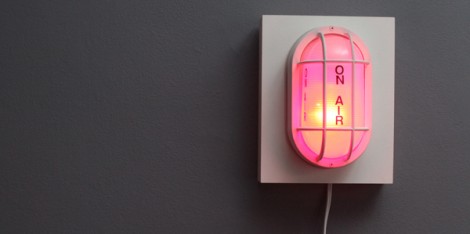
[Matt Richardson] built this on-air light to indicate whether a Make streaming show is currently in progress. Despite the obvious cord leaving the bottom of the base (it’s a power cord) his creation is pulling data from the Internet wirelessly. He’s using an Xbee module along with an Arduino to pull this off.
In addition to the light itself there’s a base station that we haven’t seen before. The hardware is a Digi ConnectPort Zigbee-to-Internet Gateway. That’s a mouthful but it’s just a box that acts as an Xbee node and facilitates communication between its own Ethernet port and other Xbee devices in the network. So no, you don’t need a computer but you do need an Ethernet connection somewhere for the base station. [Matt] is running an open source software package on the ConnectPort call Xbee Internet Gateway (xig). Watch the video after the break to see the configuration for this package. It’s a snap, and if you’ve never used an Xbee module before this gives you a good idea of how easy it really is.
[youtube=http://www.youtube.com/watch?v=xr5Na49FTS4&w=470]















Wierd… why not control it from the computer he is using to podcast. Kind of silly to have it go out to the internet to check on something that is happening inches away from it.
I’m going to make a thermometer display that connects to NASA and get’s the latest thermal imaging data off of one of the geosynchronous satellites and then parse that data into an average of the outdoor temperature so I know what temperature it is outside.
BRB I need to open the garage door so I need to send an email to my server in California to do a email to twitter gateway so the arduino on the garage door can read my tweet and open the door.
using the internet for this is very rube goldberg.
@fartface It does seem a bit overly complicated if they’re checking their own systems but it could also be very useful for someone else to monitor the streams so they never miss a show. It’s also a decent way to check if they are actually getting their broadcast online instead of just checking if the system is streaming.
To the above heckler… instead f coming here to spew, you should do what you do best… nothing. Ain’t nothing good on TV for you today??
i think the point was to show other people how to build this.
@fartface I know, it does seem silly, but here’s why we do it that way: We’re using it as a verification that the Ustream servers are broadcasting us without actually having the audience’s stream open. If we opened the audience stream, we’d be eating into the precious bandwidth we need to make the show happen.
@Michael L.: That’s how I read it too; something to be used as an internet-enabled beacon for those observers interested viewing/listening to the show.
So this whole setup comes to around $250?
@fartface I like that ‘very rube golberg’ remark, nice description.
That’s a lot of money. I work at a student radio station; our on-air light uses a cannibalized USB joystick (plus optoisolator, to read the on-air output status from our console’s logic outputs) combined with Rivendell (FOSS radio automation system http://rivendellaudio.org/) to set a flag in a database. Then it’s just an Arduino + relay to switch mains voltage, which is the bit we’re still sorting out (specifically, doing it safely). Then you plug in any light you want and you’re good. This system seems just as complex but needlessly expensive.